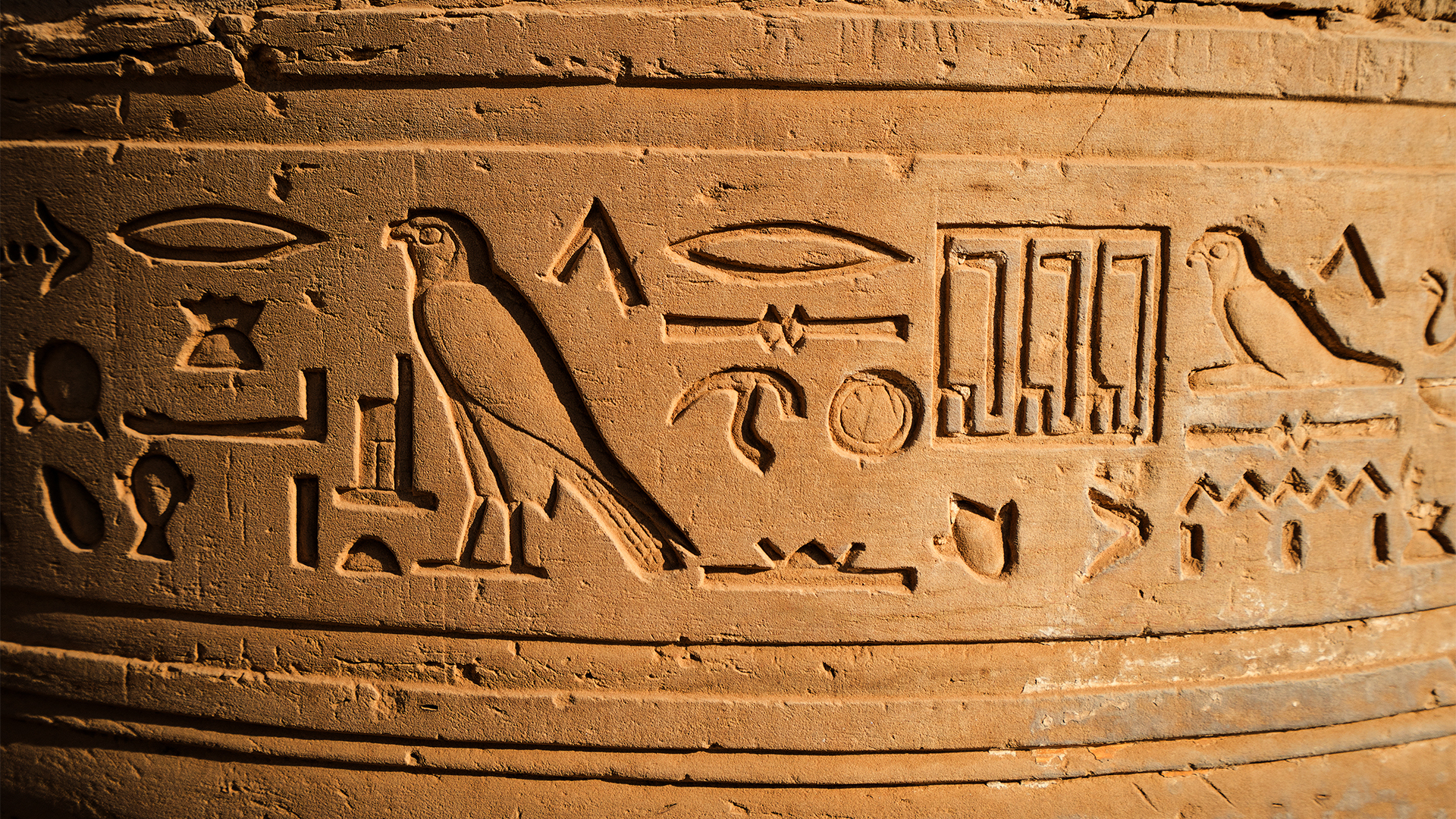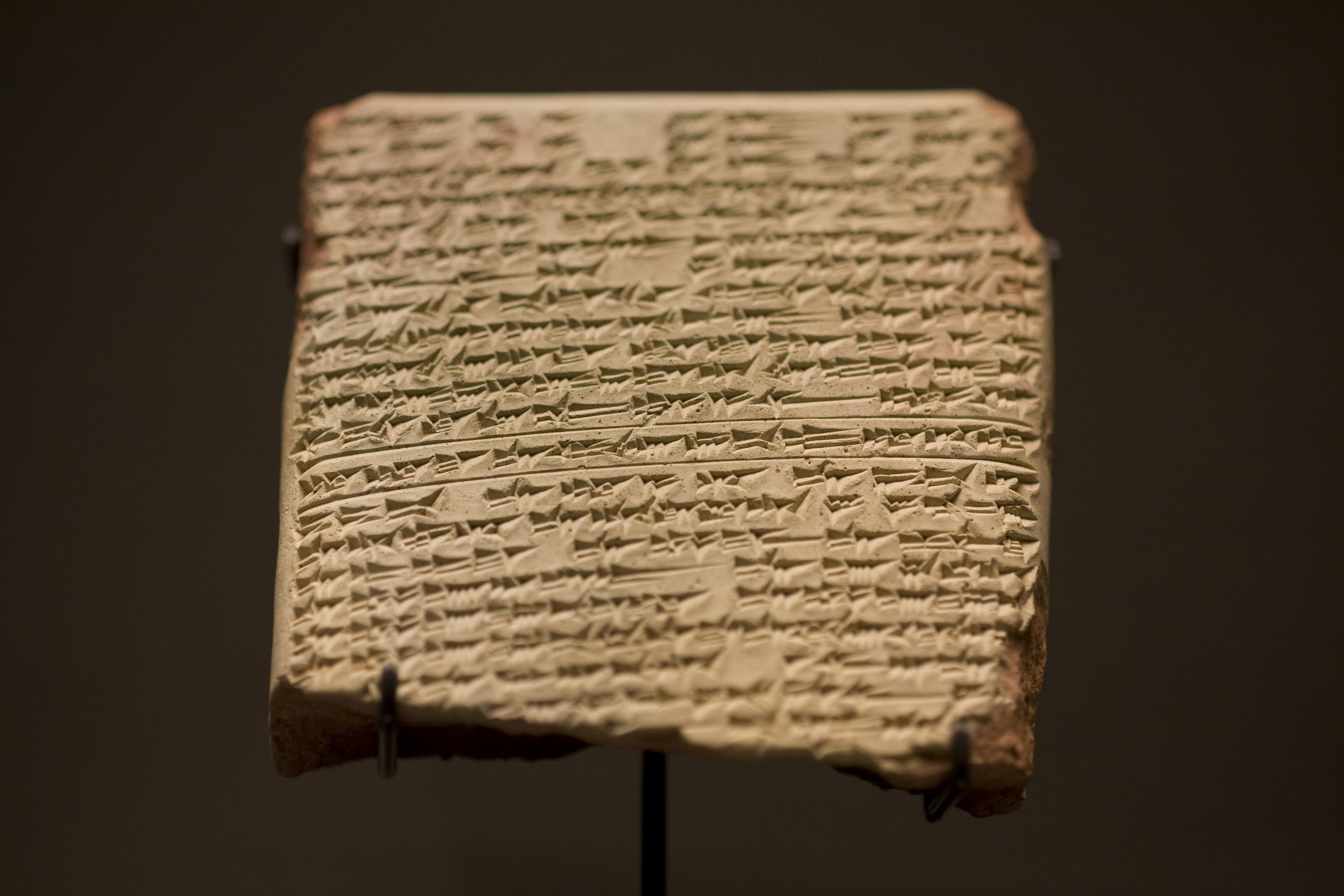When did the Egyptians start using hieroglyphs?
The earliest known Egyptian hieroglyphic writings appear fully formed, either because they were developed on perishable, now-lost materials or because they were quickly "invented by an unknown genius."

For thousands of years, the ancient Egyptians inscribed hieroglyphs on tombs, papyri and, in some cases, pyramids.
But when were hieroglyphs invented? Research shows that they emerged about 5,200 years ago, at around the same time another writing system, called cuneiform, was being invented in Mesopotamia.
"German excavations at Abydos in Egypt have revealed hieroglyphic inscriptions from [circa] 3200 BC," James Allen, a professor emeritus of Egyptology at Brown University, told Live Science in an email. Similarly, Ludwig Morenz, an Egyptology professor at the University of Bonn in Germany, told Live Science in an email that Egyptian hieroglyphs were created "around 3300/3200 BC."
Allen said "the hieroglyphic system first appears pretty much fully formed, either because its beginnings were inscribed on perishable materials [that have not survived] or because it was invented by an unknown genius."
Related: How old is ancient Egypt?
Why were hieroglyphs invented?
Why hieroglyphs were invented is a source of debate, Marc Van De Mieroop, a history professor at Columbia University, wrote in the second edition of his book "A History of Ancient Egypt" (John Wiley & Sons Ltd., 2021).
At the time hieroglyphs were invented, Egypt was unifying into a single state and administration may have been a reason for their invention. It "is logical that a state of Egypt's size and complexity required a flexible system of accounting that could keep information on the nature of goods, their quantities, provenance and destination, the people in charge of them and the date of transaction," Van De Mieroop wrote in his book.
Get the world’s most fascinating discoveries delivered straight to your inbox.
Another theory is that hieroglyphs were invented to help glorify gods and the king, Van De Mieroop wrote, noting that some early carvings showing kings contain hieroglyphs. "The glorification of the king may have been one of the driving forces in the script's invention," he wrote.
What is the oldest living writing system?
The Egyptians created hieroglyphs at around the same time as cuneiform was invented in Mesopotamia. Which system was invented first is a matter of debate among scholars.
Allen argues that Egyptian hieroglyphs were invented first, saying that the earliest cuneiform inscriptions date to around 2900 B.C. However, many scholars disagree.
For instance Orly Goldwasser, an Egyptology professor at The Hebrew University of Jerusalem wrote that cuneiform was likely developed first. "Based on the evidence at hand, it seems most likely that writing was born in Mesopotamia," Goldwasser wrote in a chapter of the book "Pharaoh's Land and Beyond: Ancient Egypt and Its Neighbors" (Oxford University Press, 2017).
In either case, cuneiform and hieroglyphs are quite different, and the two systems appear to have developed independently of each other. "Cuneiform and hieroglyphic are too dissimilar for the one to have influenced the other directly," Allen said. Cuneiform signs "represent whole words or syllables," while hieroglyphs "represent words or individual consonants" and don't represent vowels, Allen noted.
While there was some contact between the people of Egypt and Mesopotamia, hieroglyphs were developed within the Nile Valley, Morenz said. Goldwasser wrote that while the two systems are quite different, it's possible that the invention of cuneiform in Mesopotamia helped inspire Egyptians to invent hieroglyphs.
The last known Egyptian hieroglyphic inscription dates to A.D. 394, according to the University of Memphis in Tennessee. By that point in time, other writing systems such as Coptic were being used in Egypt. Knowledge of how to read and write hieroglyphs became lost and it wasn't until the 19th century, with the decipherment of hieroglyphs, that they were read again.

Owen Jarus is a regular contributor to Live Science who writes about archaeology and humans' past. He has also written for The Independent (UK), The Canadian Press (CP) and The Associated Press (AP), among others. Owen has a bachelor of arts degree from the University of Toronto and a journalism degree from Ryerson University.



